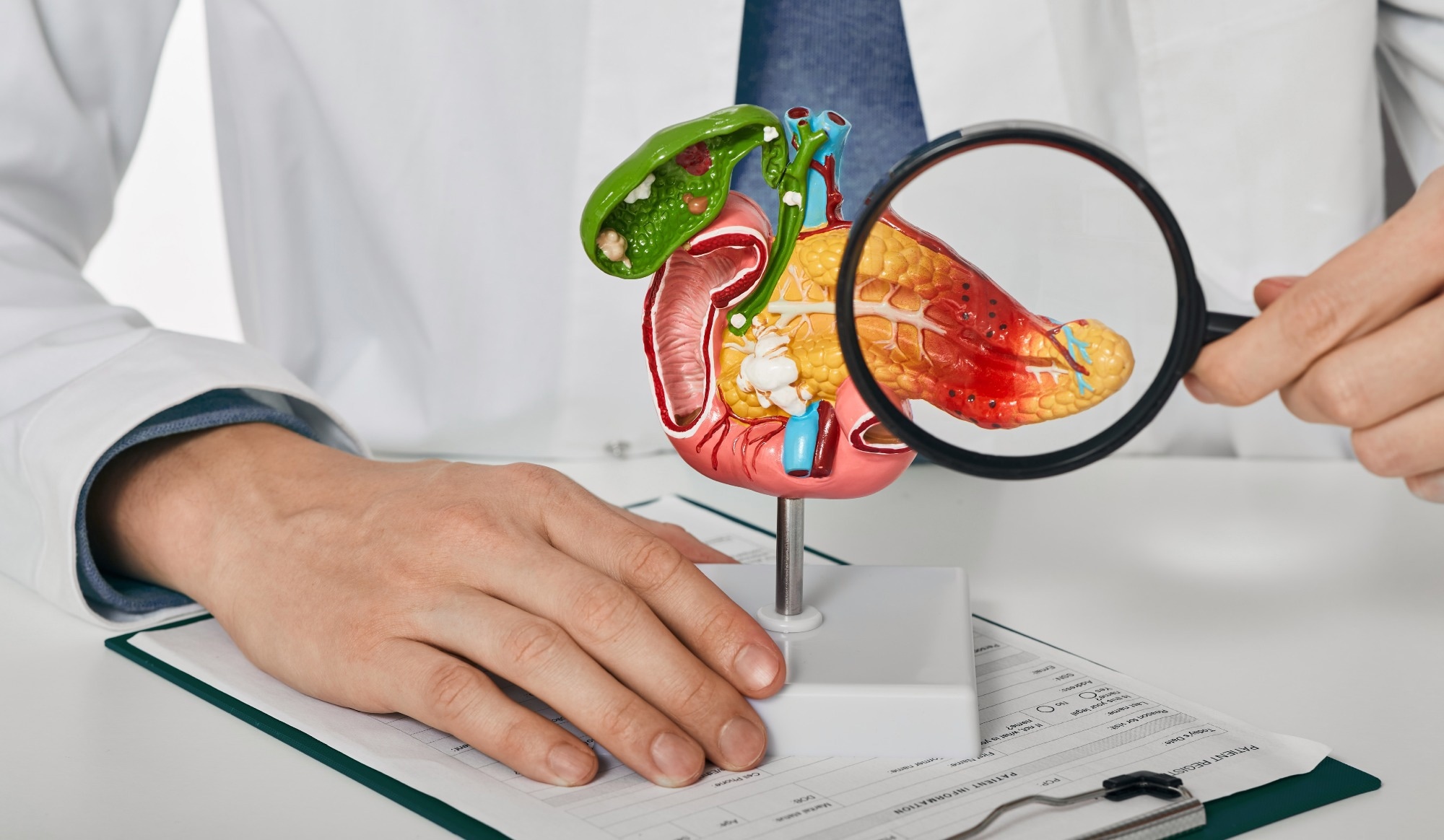Type 1 diabetes (T1D) is an autoimmune disease linked to helper T-cell recognition in non-obese diabetic (NOD) mice and humans. Moreover, T1D affects the endocrine pancreas, thus causing patients to be dependent on insulin replacement therapy for the rest of their lives. Monitoring disease progression through peripheral blood sampling could provide insights into the immune-mediated mechanisms of T1D.
 Study: Measuring anti-islet autoimmunity in mice and human by profiling peripheral blood antigen-specific CD4 T cells. Image Credit: Peackstock / Shutterstock.com
Study: Measuring anti-islet autoimmunity in mice and human by profiling peripheral blood antigen-specific CD4 T cells. Image Credit: Peackstock / Shutterstock.com
About the study
Blood samples were obtained from human donors, including just-diagnosed (JD) children, established T1D patients (ES), individuals with first-degree relatives with T1D and were human leukocyte antigen (HLA)-DQ8-positive, HLA-DQ8-positive normal non-diabetic blood donors without autoimmune disease in the family (NBD), and individuals at-risk for T1D monitored by the TrialNet consortium (MON).
Peripheral blood mononuclear cells (PMBCs) were isolated for flow cytometry (FC) analysis. Polymerase chain reaction (PCR)-based HLA-DQA1 and DQB1 haplotyping, single-cell-type gene expression profiling, and T-cell receptor (TCR) amplicon sequencing analyses were performed. HLA-DQB1 genes were assessed, with I-Ag7 and HLA-DQ8 anti-insulin peptide-major histocompatibility complex (MHC) tetramers produced in mice and humans.
Of the 12 tetramers produced, four were utilized for the analysis, which included C-peptide59–70 (Cp59–70), Cp65–75, Ins12–20, and Ins13–21. The tetramers and surface antibodies were stained for single-cell sorting through fluorescence-activated cell sorting (FACS).
Ribonucleic acid (RNA) extracted from 3,926 cells was analyzed by single-cell quantitative PCR (qPCR) and across all donors, whereas 3,926 insulin-targeted helper T lymphocytes were sorted from the samples. NOD/LtJ mice were used for the animal experiments, and weekly blood samples were collected to assess glycemia.
BDC2.5- and insulin-specific cells were monitored twice weekly in NOD mice between weeks four, which is one week after weaning, and 25, at which point 80% of mice developed diabetes, using peptide tetramers. The pancreas was examined by indirect immunofluorescence (IIF) for glucagon and insulin content.
A total of 1,839,057 helper T lymphocytes and 2,695 antigen-targeted cells were isolated from the murine samples. Uniform manifold approximation and projection (UMAP) and unsupervised clustering analyses were performed. Gaussian mixture modeling (GMM) was performed for the combined analysis of the genomic and proteomic profiles.
Study findings
The proportions of anti-insulin helper T lymphocytes were not directly informative; however, the activation states of anti-insulin T lymphocytes assessed by RNA and protein profiling allowed the researchers to distinguish the absence of autoimmunity from T1D progression.
Activated anti-insulin helper T lymphocytes were detected at the time of diagnosis, as well as among T1D patients with established illness and some at-risk individuals. In regard to activation and cell count, anti-insulin T lymphocytes showed peaks and troughs throughout the study period, which was similarly observed in all mice. However, histological examination of the pancreas of NOD mice showed a side-by-side presence of normal insulin-producing islets and islet cells that only produced glucagon.
Cytometry profiling alone adequately correlated normalcy versus T1D status with 70% accuracy, whereas the combined analysis with gene expression data classified all at-risk individuals as diabetic or normal. Five clusters of helper T lymphocytes were visualized in the UMAP analysis, with single-cell transcriptomics showing distinct signatures in the individual groups.
Low4 and High1 clusters were observed among donors without autoimmunity, whereas High2 and High3 clusters were related to T1D. A higher mean count was observed among MON individuals, with a two-way separation between low- and high-count individuals and an increased tetramer-positive cell population among the ES individuals. This likely indicated a large-sized memory cell compartment in the patients.
T lymphocytes activated exhibited an increased expression of various genes, including tyrosine kinase 2 (TYK2), HLA-DRA, tumor necrosis factor receptor superfamily member 1B (TNFRSF1B), interferon alpha and beta receptor subunit 2 (IFNAR2), and nuclear factor kappa b subunit 1 (NFKB1). T follicular helper type (TFH) cells exhibited increased expression of nuclear receptor 4A1 (NR4A1), HLA-DRA, interferon-gamma receptor 1 (IFNGR1), C-C chemokine receptor 1 (CCR1), zinc finger E-box binding homeobox 2 (ZEB2), and B-cell lymphoma 6 (BCL6).
Regulatory T (Treg) lymphocytes showed increased interleukin-2 receptor subunit alpha (IL2RA), forkhead box P3 (FOXP3), GATA binding protein 3 (GATA3), T-box transcription factor protein (TBX21), CCR4, and signal transducer and activator of transcription 5B (STAT5B) expression. Memory T-cells exhibited increased in IL2RA, FOXP3, HLA-DRA, GATA3, β2 microglobulin (β2M), CD44, NFKB1, and TNFRSF1B expression.
The NBD group exhibited Treg lymphocyte predominance of about 75%, whereas TFH cells predominated in the JD and MON cohorts at 10% and 13%, respectively. Memory T-cells comprised 85%, 76%, and 60% of lymphocytes in JD, ES, and MON donors, respectively, but were fewer in NBD donors.
The NBD profile, which consisted of insulin-tolerized TH1 lymphocytes and Treg lymphocytes in the low and high expression groups, respectively, indicated a suboptimal cytokine and TCR combination. These findings suggest peripheral tolerance for insulin-targeted helper T-cells and islet-targeted immunity absence in normal individuals.
ES individuals exhibited ongoing anti-insulin responses. The P9 switch was functional for C-peptide-targeted T lymphocyte clones.
The GMM analysis trained on 14 samples from five, four, and five NBD, JD, and ES donors, respectively, showed that the prediction results of about 90% of T1D patients matched estimated and certain findings for all cases.
Based on the study findings, islet autoimmunity could be diagnosed in peripheral blood by antigen-targeted helper T-cell profiling in near real-time with high accuracy.
Journal reference:
- Sharma, S., Tan, X., Boyer, J., et al. (2023). Measuring anti-islet autoimmunity in mice and human by profiling peripheral blood antigen-specific CD4 T cells. Science Translational Medicine. doi:10.1126/scitranslmed.ade3614